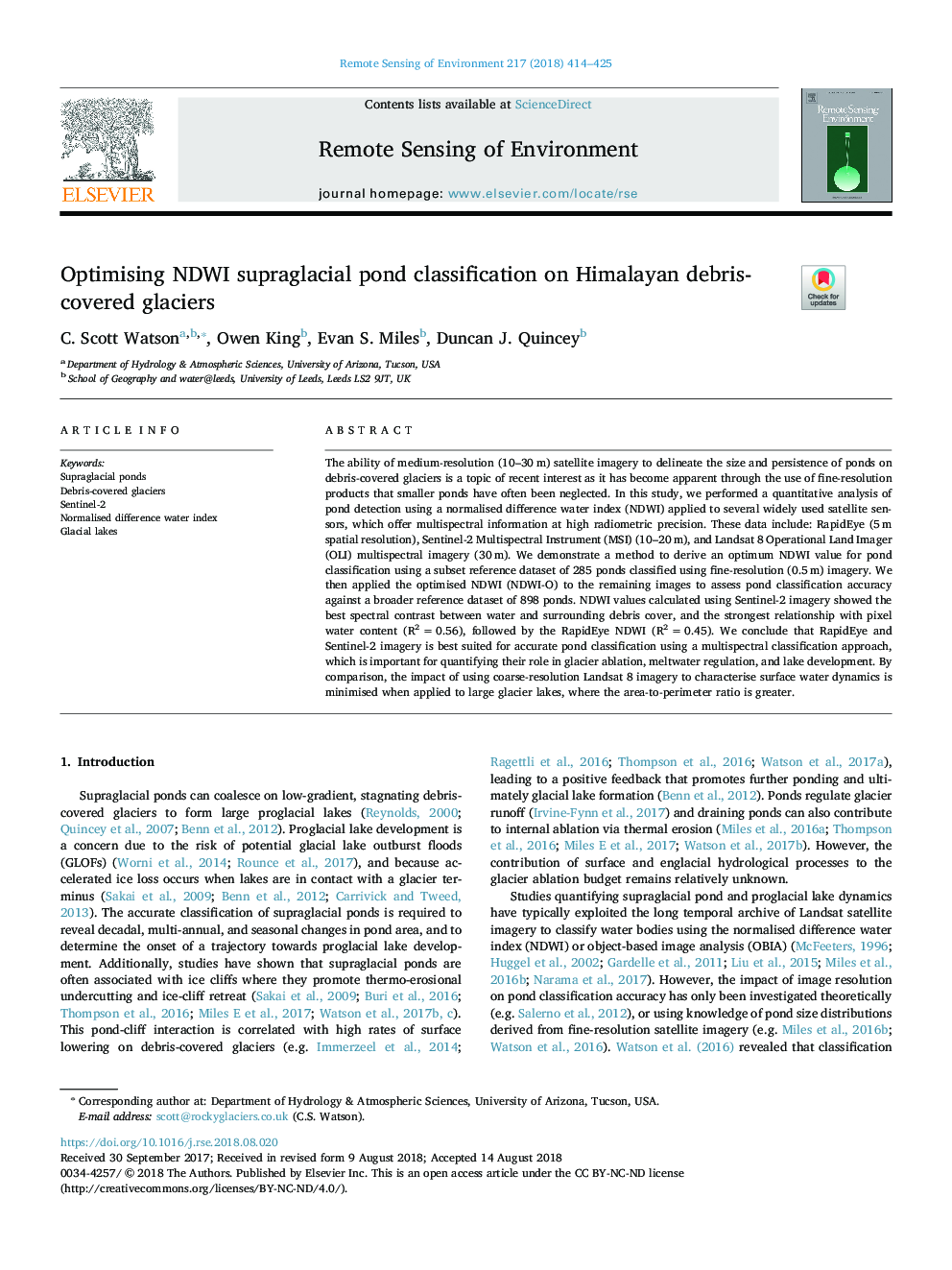| Article ID | Journal | Published Year | Pages | File Type |
|---|---|---|---|---|
| 10113981 | Remote Sensing of Environment | 2018 | 12 Pages |
Abstract
The ability of medium-resolution (10-30â¯m) satellite imagery to delineate the size and persistence of ponds on debris-covered glaciers is a topic of recent interest as it has become apparent through the use of fine-resolution products that smaller ponds have often been neglected. In this study, we performed a quantitative analysis of pond detection using a normalised difference water index (NDWI) applied to several widely used satellite sensors, which offer multispectral information at high radiometric precision. These data include: RapidEye (5â¯m spatial resolution), Sentinel-2 Multispectral Instrument (MSI) (10-20â¯m), and Landsat 8 Operational Land Imager (OLI) multispectral imagery (30â¯m). We demonstrate a method to derive an optimum NDWI value for pond classification using a subset reference dataset of 285 ponds classified using fine-resolution (0.5â¯m) imagery. We then applied the optimised NDWI (NDWI-O) to the remaining images to assess pond classification accuracy against a broader reference dataset of 898 ponds. NDWI values calculated using Sentinel-2 imagery showed the best spectral contrast between water and surrounding debris cover, and the strongest relationship with pixel water content (R2â¯=â¯0.56), followed by the RapidEye NDWI (R2â¯=â¯0.45). We conclude that RapidEye and Sentinel-2 imagery is best suited for accurate pond classification using a multispectral classification approach, which is important for quantifying their role in glacier ablation, meltwater regulation, and lake development. By comparison, the impact of using coarse-resolution Landsat 8 imagery to characterise surface water dynamics is minimised when applied to large glacier lakes, where the area-to-perimeter ratio is greater.
Related Topics
Physical Sciences and Engineering
Earth and Planetary Sciences
Computers in Earth Sciences
Authors
C. Scott Watson, Owen King, Evan S. Miles, Duncan J. Quincey,
